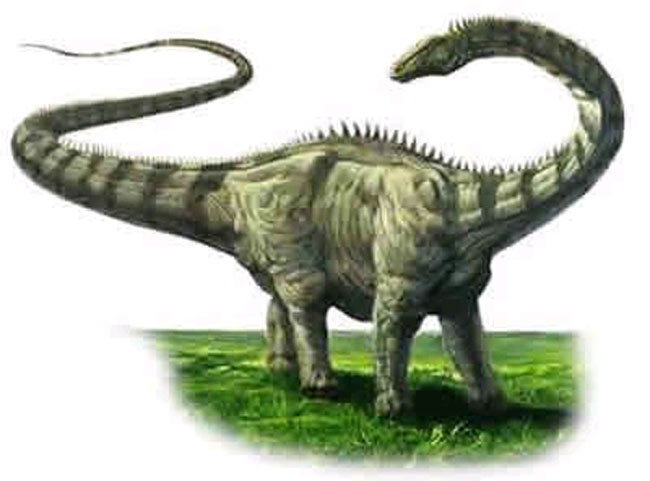The secret of the incredible size of giant dinosaurs may be that this reptile uses more energy for growth than keeping the body warm compared to other animals.
A new model may help explain how some dinosaurs, such as the long-necked sauropods, can reach about 60 tons - about 8 times the mass of an African elephant, species. The biggest thing on land today.
Two major factors that determine the size of the spine are the amount of food and the energy use of the animal, said researcher Brian K. McNab, a paleontologist at the University of Florida. For example, elephants can grow to quite large sizes because they eat grass, a rich food.
Energy consumption depends in part on how animals control their body temperature. Mammals and birds, which are hot-blooded, must use energy to keep their internal temperatures stable, and therefore they have a high metabolic rate. However, cold-blooded animals such as reptiles, the body temperature depends on the environment, so the internal temperature varies depending on the surrounding conditions.
Warm-blooded animals must eat more than cold-blooded species to keep the body warm.
Dinosaurs that are hot-blooded or cold-blooded are a highly debated issue in paleontologists. McNab sought to answer this question through the availability of food for dinosaurs, and he included this element in the model describing the link between spine size, energy consumption and food source.
If the source of food in the Middle Kingdom - the period of dinosaurs living - is more abundant than today, it is possible that dinosaurs are hot-blooded, even though they must eat a lot to stabilize their body temperature. The blue whale, the largest creature that ever existed on Earth, is a warm blooded species. They provide energy for their 160-ton body with abundant food in the marine environment.
 Illustration of a sauropods dinosaur. Sauropods are believed to be the largest dinosaur and the largest animal ever to live on land. ( Photo: Ministry of Home Affairs, US Department of Land Management)
Illustration of a sauropods dinosaur. Sauropods are believed to be the largest dinosaur and the largest animal ever to live on land. ( Photo: Ministry of Home Affairs, US Department of Land Management)
However, McNab believes that this is not a case of dinosaurs.
He said to LiveScience: 'I think dinosaurs cannot have fast metabolism like mammals or birds, simply because the food source is not so abundant.'
For example, there are no grasses in the Middle Kingdom, the main food source for plant-eating animals, McNab said.
'How can dinosaurs grow bigger than mammals if the source of food at that time is equal or even poorer than it is today? I think dinosaurs have used most of the energy gained to grow, not to maintain body temperature. '
So dinosaurs are cold-blooded species? Not entirely accurate, McNab argues. He thinks that dinosaurs lie somewhere between warm-blooded and cold-blooded animals. They do not have a fast metabolic rate, but the internal temperature does not fluctuate like a cold-blooded animal. Instead, their huge size is the factor that helps stabilize body temperature.
McNab said: 'When you're so big, your body temperature doesn't drop as fast as a small lizard. Dinosaurs have a large body mass, but the surface is quite small. So they may be warm, the internal temperature does not change unless something unexpected happens'.
The study is published online in the Proceedings of the National Academy of Sciences magazine on July 6.
 'Fine laughs' - Scary and painful torture in ancient times
'Fine laughs' - Scary and painful torture in ancient times The sequence of numbers 142857 of the Egyptian pyramids is known as the strangest number in the world - Why?
The sequence of numbers 142857 of the Egyptian pyramids is known as the strangest number in the world - Why? History of the iron
History of the iron What is alum?
What is alum?